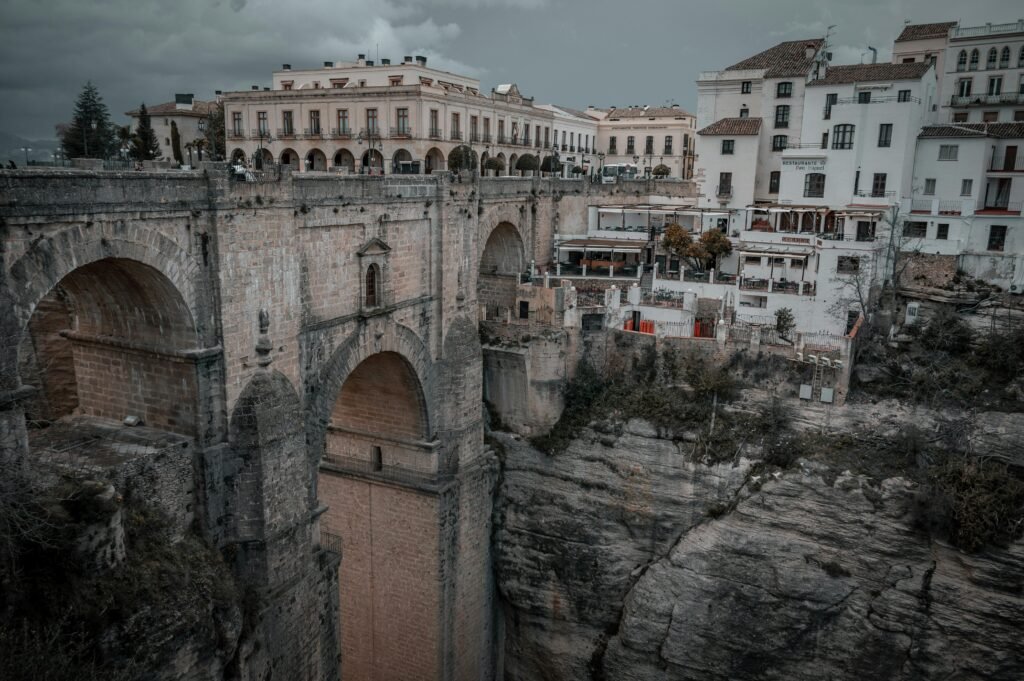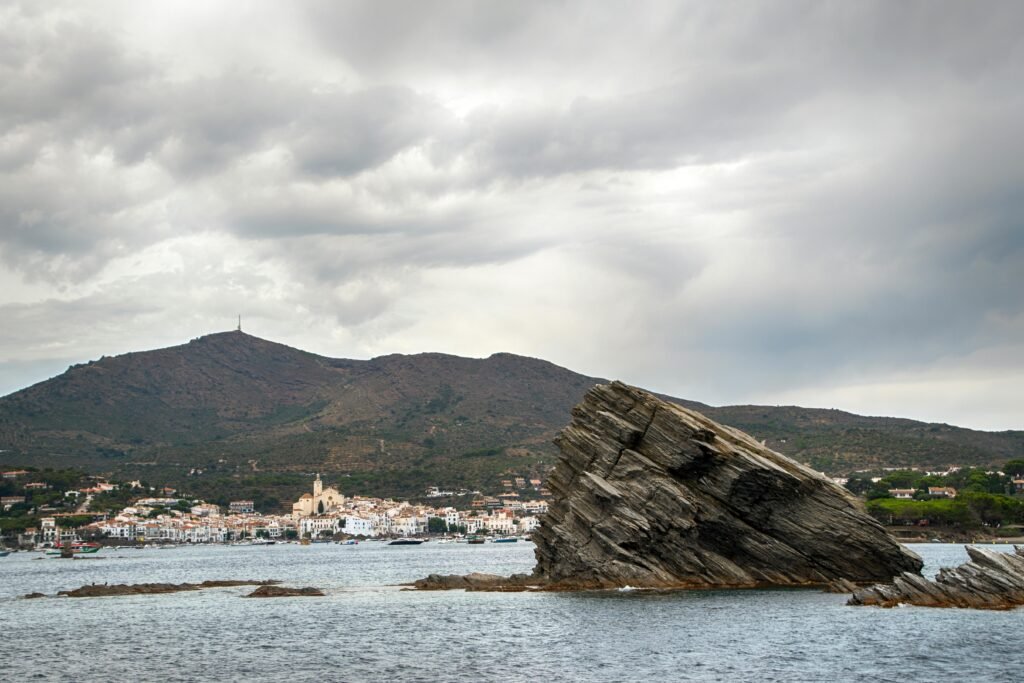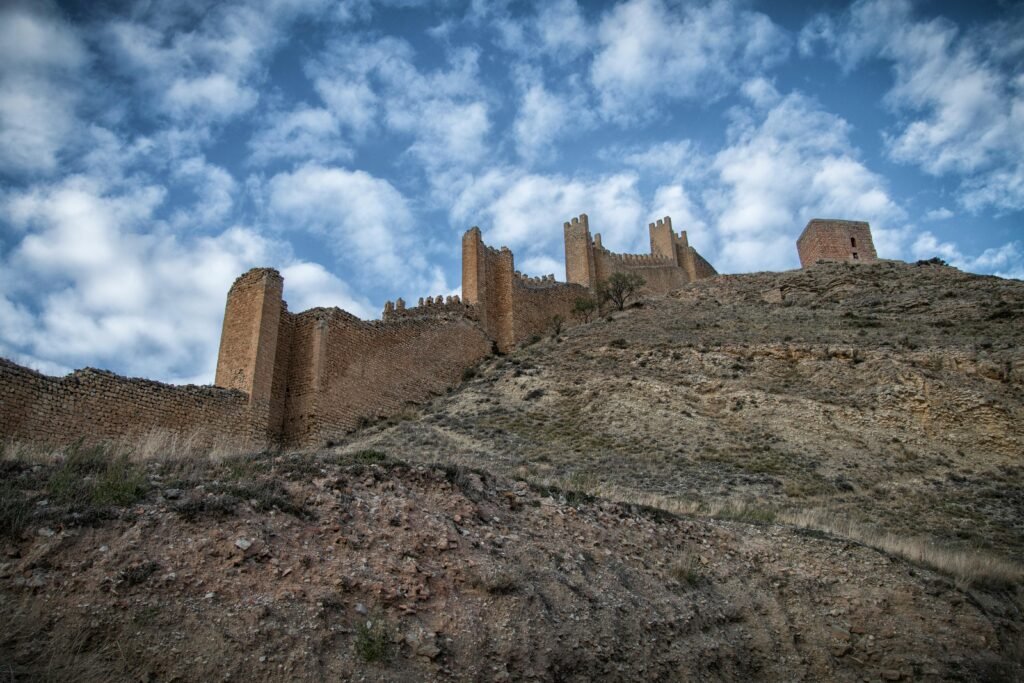Introduction to Hidden Gems
Spain, a country renowned for its vibrant culture, stunning landscapes, and historical significance, holds countless treasures beyond its well-trodden paths. While cities like Barcelona, Madrid, and Seville often capture the spotlight, myriad charming towns—often referred to as “hidden gems”—offer a distinctive slice of Spanish life that is equally fascinating. These lesser-known locales are characterized by their authentic experiences, picturesque scenery, and rich cultural heritage, providing an alternative to the bustling tourist hotspots.

The concept of hidden gems in Spain encompasses locales that may not be found in every travel guide yet deserve attention for their unique offerings. These towns tend to be less crowded, allowing visitors to immerse themselves more deeply in local customs and traditions. From quaint village markets to scenic hiking trails and historic architecture, each hidden gem presents an opportunity for discovery and connection with Spain’s diverse regions.
Exploring these towns allows travelers to appreciate the country’s beauty in a more intimate setting. For example, one might stumble upon a serene coastal village where the pace of life slows down, or a mountain town rich in cultural heritage, where festivals celebrate age-old traditions. This variance enriches the travel experience, underscoring the importance of venturing off the beaten path.
As we delve into specific towns, we highlight the charm and allure of these hidden gems. Each destination promises unique cultural experiences, breathtaking landscapes, and a genuine sense of community. By exploring these underrated locations, travelers can create lasting memories while supporting local economies and encouraging the preservation of traditional ways of life.
Why Choose Underrated Towns?
When planning a trip to Spain, many travelers gravitate towards renowned cities like Barcelona, Madrid, and Seville. However, there exists a treasure trove of underrated towns that provide visitors with unique experiences absent in traditionally popular tourist destinations. Opting for these hidden gems offers numerous advantages that can transform a standard vacation into an unforgettable journey.
One of the most significant benefits of visiting lesser-known towns is the sheer lack of crowds. Unlike major cities often packed with tourists, these quaint locations allow for a more spacious atmosphere where you can explore at your own pace. With fewer visitors, you can engage in a more relaxed experience, gaining insight into the town’s history and culture without feeling rushed or overwhelmed. This tranquility often leads to deeper reflections and a more genuine appreciation of the surroundings.
Additionally, underrated towns present opportunities for authentic cultural encounters. Local traditions are frequently preserved in these areas, offering visitors a chance to witness customs and practices that may have faded in larger urban environments. Whether it’s a local festival, a traditional craft, or regional cuisine, connecting with residents often yields richer interactions and a sense of community that larger towns might lack. You are more likely to be welcomed into their world, share stories, and create lasting memories that transcend typical tourist experiences.
Another noteworthy aspect is the chance to observe a different perspective on Spanish life. These towns often reflect authentic lifestyles that have been shaped by their unique histories and environments. By venturing off the beaten path, you will not only enrich your understanding of Spain but also enjoy a versatile travel experience that highlights the diversity of the country.
In essence, choosing to explore underrated towns in Spain allows travelers to experience the richness of local culture, connect with residents, and savor the beauty of lesser-known landscapes, creating a multifaceted journey through the heart of Spain.
Ronda: The Romantic Cliffside Town
Nestled in the heart of Andalusia, Ronda is one of Spain’s most captivating towns, renowned for its stunning cliffside location and dramatic views. Perched above a deep gorge, the well-preserved historic architecture and picturesque landscapes make Ronda a truly romantic getaway. The iconic Puente Nuevo bridge, which spans the El Tajo gorge, serves as a breathtaking focal point. Completed in the late 18th century, the bridge is not only an engineering marvel but also offers panoramic vistas that are a photographer’s dream.

Beyond the stunning views, Ronda boasts a rich historical tapestry, with influences from Roman, Moorish, and Christian cultures. Visitors can explore the ancient ruins of the Roman Puente Viejo and the Alcázar, a medieval fortress that reflects the town’s multifaceted past. The streets of Ronda provide ample opportunities to discover charming plazas, vibrant markets, and quaint shops selling local crafts.
For those looking to immerse themselves in Ronda’s vibrant culinary scene, the town does not disappoint. Traditional Andalusian tapas can be enjoyed throughout the town, where local ingredients take center stage. Restaurants offering the region’s famous olive oil, locally sourced meats, and fresh seafood highlight the culinary essence of Ronda. Visitors can savor these dishes while basking in the romantic ambiance, often accompanied by stunning views of the surrounding countryside.
Ronda also serves as a gateway for various outdoor activities. The nearby Sierra de Grazalema Natural Park offers hiking opportunities and bird-watching experiences that further connect visitors with the stunning natural beauty of the region. Whether wandering through its historic streets, enjoying a delightful meal, or embracing the breathtaking landscapes, Ronda captures the heart and imagination, making it a hidden gem not to be missed when exploring Spain.
Cadaqués: A Painter’s Paradise
Located on the northeastern coast of Spain, Cadaqués stands out as an enchanting town that captivates both artists and travelers alike. Renowned for its stunning coastal views, this picturesque destination is tucked away along the Costa Brava, surrounded by the rugged beauty of the Mediterranean landscape. The town’s unique geographical positioning provides an abundance of natural light, a factor that has long drawn creatives seeking inspiration for their work. Its striking scenery, including crystal-clear waters and dramatic cliffs, makes Cadaqués a painter’s paradise.

The artistic heritage of Cadaqués extends back through centuries, with its charming streets adorned with whitewashed buildings offering a glimpse into its historical significance. Notably, the town has been a favored retreat for monumental artists, including the famous surrealist Salvador Dalí. Dalí spent a considerable part of his life in the nearby Port Lligat, and his residence has now been transformed into a museum that showcases his eccentric works and offers insights into his creative process. Artists of various disciplines continue to flock to Cadaqués, drawn by its vibrant atmosphere and the undeniable allure it holds for those seeking artistic expression.
Walking through the town, one is encountering a blend of nostalgic charm and cultural richness. The narrow alleyways are lined with local shops, galleries, and inviting cafés, presenting an opportunity for visitors to immerse themselves in the local culture. The annual festivals and events spotlight the town’s artistic spirit, showcasing both local and international talent. Additionally, the surrounding natural landscape offers numerous outdoor activities, such as hiking and sailing, perfectly complementing the town’s artistic pursuits. Thus, Cadaqués remains a hidden gem where one can relish the combination of breathtaking coastal scenery and the thriving artistic community, making it an essential stop for anyone exploring Spain.
Albarracín: A Medieval Jewel
Nestled in the hills of Teruel, Albarracín is a captivating medieval town that enchants visitors with its unique charm and history. With its distinctive pink-hued buildings set against a picturesque backdrop of rugged cliffs and valleys, Albarracín provides a glimpse into Spain’s rich past. The town is renowned for its well-preserved historical architecture, which showcases a blend of Muslim and Christian influences dating back to the medieval period. Wandering through the narrow, winding streets, one feels transported to another era. Each corner offers a new perspective, highlighting the town’s traditional stone structures and vibrant facades.

Historically, Albarracín served as a strategic stronghold during the Reconquista, and remnants of its defensive walls can still be seen today. Walking along these ancient fortifications allows visitors to appreciate not only the stunning views of the surrounding landscape but also the impressive military architecture that once protected the town. The walls extend for nearly 1,000 meters, enclosing the historic center and culminating in the imposing castle perched above, providing a panoramic view of the area.
For those seeking outdoor adventures, Albarracín is a gateway to various hiking trails, each offering a different perspective of the stunning natural scenery. The Sierra de Albarracín mountains are a haven for nature enthusiasts, providing opportunities for hiking, rock climbing, and birdwatching. Additionally, exploring the local cuisine is essential; dining in one of the town’s cozy restaurants allows one to savor traditional Aragonese dishes, enhancing the experience of this hidden gem.
In summary, Albarracín is not merely a stop on the map but a destination that showcases Spain’s medieval heritage and diverse landscapes. Its historical significance and breathtaking scenery make it a must-visit for anyone exploring the hidden gems of Spain.
Cultural Experiences in Hidden Towns
Spain is renowned for its vibrant culture and rich traditions, yet many of its hidden towns offer experiences that are equally captivating but often overlooked. Visitors to these lesser-known locales have the opportunity to immerse themselves in authentic Spanish culture through various engaging activities. One of the most distinctive ways to connect with local communities is by participating in traditional festivals. Each hidden town has its unique celebrations, often rooted in centuries-old customs, offering a glimpse into the heart of Spanish life.
For instance, towns like Ronda and Frigiliana showcase local festivals that feature folkloric music, dance, and traditional costumes, allowing visitors to witness and partake in the celebration of life and heritage. These events not only offer entertainment but also serve as a platform for cultural exchange, where travelers can interact with the townspeople and learn about the significance of these traditions.
Another significant cultural experience lies in the realm of traditional crafts. In many hidden towns, artisans preserve age-old techniques in pottery, weaving, and woodworking. Engaging with these craftsmen provides insight into their skills and the stories behind their products. Visitors can participate in workshops, gaining hands-on experience while supporting local craftsmanship. This interaction fosters a deeper appreciation for the artistry involved and contributes to the preservation of these cultural practices.
Moreover, the culinary scene in these hidden gems is a testament to regional diversity. Each town boasts its signature dishes, often made using locally sourced ingredients. Travelers are encouraged to discover these flavors by dining at family-run establishments or participating in cooking classes that highlight classic recipes passed down through generations. This gastronomic exploration not only tantalizes the taste buds but also enhances the understanding of the local culture.
These experiences in the hidden towns of Spain enrich a visitor’s journey, providing an opportunity to engage meaningfully with the locals and experience the true essence of Spanish culture. By immersing themselves in festivals, crafts, and local cuisines, travelers can create lasting memories while supporting the communities they visit.
Practical Travel Tips
When planning a trip to the hidden gems of Spain, optimal timing can significantly enhance your experience. The best times to visit these lesser-known towns are during the spring (April to June) and fall (September to November) when the weather is pleasant, and tourist crowds are minimal. To fully immerse yourself in local culture, consider timing your visit to coincide with local festivals which often showcase traditional music, food, and customs.
Transportation options to these towns can vary. While major cities like Madrid and Barcelona have extensive public transport systems, smaller towns may require more planning. Renting a car can be an effective way to explore remote areas, offering the flexibility to uncover hidden attractions at your own pace. Alternatively, local bus services are often available, connecting major cities to smaller villages. Do check the schedules in advance, as they may operate less frequently. For those who prefer train travel, Spain’s Renfe service offers routes to many charming towns with convenient connections.
When it comes to accommodation, travelers will find a range of options from quaint boutique hotels to charming bed-and-breakfasts that reflect the local character. Researching ahead can help you find places that not only provide comfort but also offer unique insights into the local way of life. Engaging with hosts and asking for recommendations can lead to unforeseen adventures and deeper connections with the community.
Additionally, respecting local etiquette is crucial in these smaller towns. Greeting local residents with a friendly “hola” (hello) and showing appreciation for their customs will enhance your interactions. Understanding basic phrases in Spanish can also go a long way in fostering goodwill. By approaching your visit with sensitivity and openness, you can enjoy a genuinely enriching travel experience in Spain’s hidden gems.
Other Noteworthy Hidden Gems
While Ronda, Cadaqués, and Albarracín may capture the attention of many travelers, Spain is home to a plethora of other hidden gems awaiting discovery. These underrated towns enrich the diverse cultural tapestry of the country and provide visitors with unique experiences away from the crowded tourist hotspots. Here are several towns worth exploring in your next travels across Spain.
One such gem is Galisteo, located in the province of Cáceres. This small village has an intriguing history, characterized by its ancient stone walls and beautiful medieval architecture. Visitors can stroll through its narrow streets and enjoy the tranquility of a town that has largely remained untouched by modernity, making it an ideal spot for relaxation and exploration.
Another remarkable destination is Frigiliana, situated in the province of Málaga. Renowned for its picturesque whitewashed buildings and vibrant flowers, this charming town offers stunning views of the surrounding mountains and the Mediterranean coastline. The town’s Moorish heritage is evident in its narrow, winding streets, which lead to enchanting squares and local artisan shops.
For those interested in history, Belchite is a haunting yet fascinating location near Zaragoza. Known for its ruins and the remnants from the Spanish Civil War, Belchite presents a profound narrative of resilience and restoration. Visitors can explore the evocative sites, making it an informative stop for history enthusiasts.
In Catalonia, the town of Siurana captivates with its breathtaking views over the surrounding cliffs and a rich tapestry of legends. With its ancient church and the remnants of Moorish structures, Siurana feels like a step back in time, offering breathtaking landscapes ideal for both hiking and photography.
These towns, and many more like them, are a testament to Spain’s rich heritage and vibrant local culture, encouraging travelers to venture off the beaten path and uncover the authentic essence of the country.
Conclusion: Embracing the Unknown
In today’s world, where popular tourist destinations often overshadow lesser-known locales, it is imperative to bring attention to the hidden gems of Spain. Exploring these underrated towns not only offers rich experiences that are authentic to the culture but also fosters personal connections that often go unnoticed in more crowded destinations. These towns are repositories of unique histories, customs, and local flavors awaiting the curious traveler.
Venturing off the typical tourist pathways allows individuals to engage with the local community, savor traditional cuisines, and appreciate art forms that may not be visible in major cities. Every hidden gem weaves its own narrative and invites visitors to participate in stories that span generations. Engaging with Spain’s underrated towns yields delightful surprises, from stunning architecture to vibrant festivals that highlight the region’s cultural diversity.
Moreover, embracing the unknown can transform a mundane travel itinerary into a memorable journey filled with enlightening experiences. This exploration enhances the overall travel adventure as it encourages a deeper understanding of the Spanish way of life beyond what is found in travel brochures. Authenticity shines through in these understated sites, where travelers can witness the soul of Spain, often absent from heavily marketed tourist attractions.
Thus, the pursuit of the lesser-known towns not only provides a respite from the ordinary but also enriches one’s travel experience. As you plan your next trip, consider including Spain’s hidden gems; these towns will surely reward you with charm, warmth, and countless unforgettable moments. Remember, the joy of travel often lies in the journey of discovery, encouraging you to seek out paths less traveled and appreciate the beauty that resides in the quieter corners of the world.






